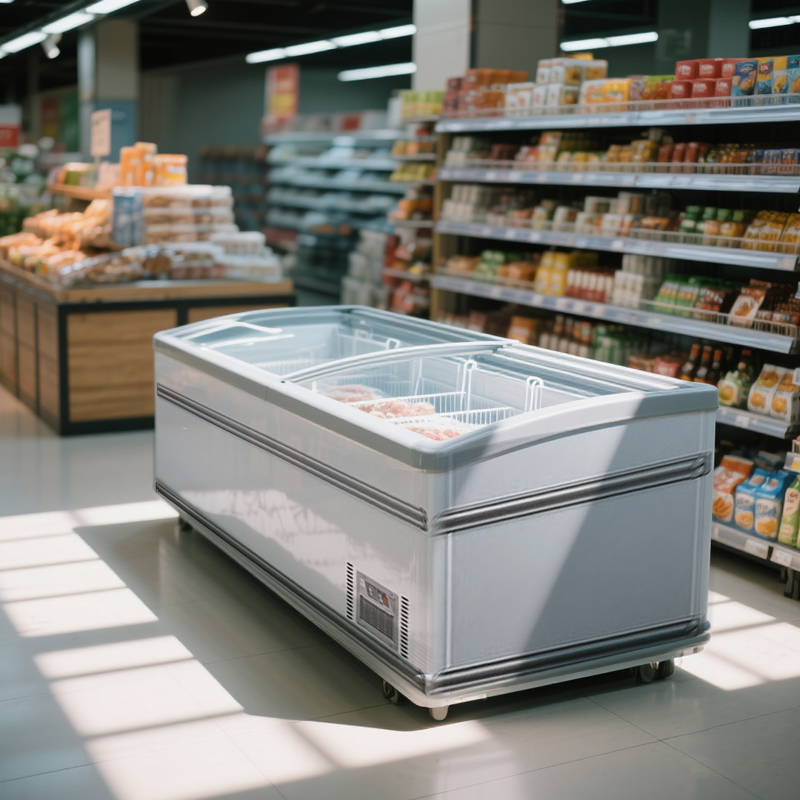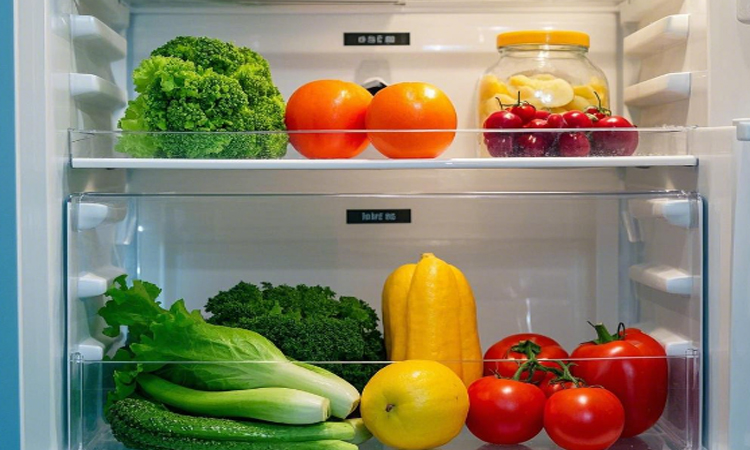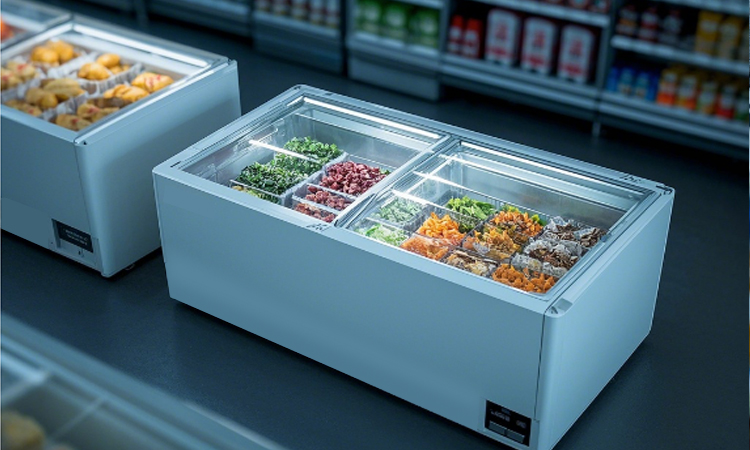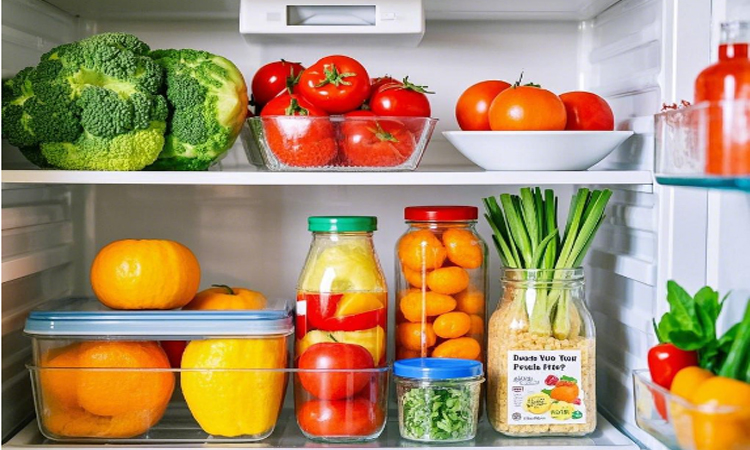
Italian ice cream (known globally as gelato) is celebrated for its rich texture, intense flavors, and fresh ingredients—qualities that depend heavily on proper storage and display. Unlike regular ice cream, gelato has a lower fat content (around 4-8% vs. 10-16% for ice cream) and higher sugar content, making it more susceptible to melting, dehydration, and flavor degradation. This uniqueness demands specialized storage solutions: Italian ice cream cabinets (or gelato display cases). These cabinets are engineered to preserve gelato’s delicate consistency while showcasing its vibrant colors and artisanal appeal. Below is a detailed exploration of the key features that define high-quality Italian ice cream cabinets, tailored to the needs of gelaterias, cafes, and dessert shops.

1. Precision Temperature Control: The Core of Gelato Preservation
Temperature is the most critical factor in maintaining gelato quality. Unlike standard ice cream freezers (which operate at -18°C to -20°C), Italian ice cream cabinets require a much narrower, higher temperature range to keep gelato scoopable yet stable. This precision sets them apart from generic refrigeration equipment.
1.1 Ideal Temperature Range for Gelato
Top-tier Italian ice cream cabinets maintain a temperature between -5°C and -2°C. This range strikes a perfect balance: it prevents gelato from hardening into an un scoopable block (a common issue with colder freezers) while slowing bacterial growth and melting. For example, gelato stored at -3°C retains its creamy texture—when scooped, it holds its shape without being too firm, allowing flavors like pistachio or stracciatella to shine. Cabinets with temperature fluctuations exceeding ±1°C are unsuitable, as even small shifts can cause ice crystal formation (ruining smoothness) or partial melting (leading to soggy layers).
1.2 Dual-Zone and Multi-Zone Temperature Systems
Many premium Italian cabinets feature dual-zone or multi-zone temperature control, a game-changer for shops offering multiple gelato varieties. For instance, a cabinet might have one zone at -4°C for creamy gelatos (e.g., vanilla, chocolate) and another at -2°C for fruit-based sorbets (which have higher water content and need slightly warmer conditions to avoid freezing solid). This flexibility eliminates the compromise of storing all flavors at a single temperature, ensuring each product is served at its best. Brands like Carpigiani (a leading Italian gelato equipment manufacturer) offer cabinets with up to 6 independent zones, ideal for large-scale gelaterias.
2. Optimized Humidity Regulation: Preventing Dehydration and Sogginess
Gelato’s high sugar content makes it prone to dehydration—when moisture evaporates from the surface, leaving a dry, crusty layer that ruins texture and flavor. Italian ice cream cabinets address this with advanced humidity control systems, a feature rarely found in standard ice cream freezers.
2.1 Target Humidity Levels
The optimal humidity range for gelato storage is 65% to 75%. This level keeps the gelato’s surface slightly moist, preserving its creamy consistency without causing condensation (which would make it soggy or dilute flavors). Cabinets without humidity control often lead to gelato drying out within 24-48 hours, forcing shops to discard unused product—a significant waste of time and money.
2.2 Anti-Condensation and Humidification Technologies
To maintain consistent humidity, Italian cabinets use two key technologies: anti-condensation glass and built-in humidifiers. Anti-condensation glass (coated with a thin conductive layer) prevents water droplets from forming on the display surface, ensuring customers can clearly see the gelato without obstruction. Built-in humidifiers—often using ultrasonic technology—release a fine mist into the cabinet, replenishing moisture lost through door openings or natural evaporation. Some models even adjust humidity automatically based on temperature changes, ensuring stability even during peak hours when doors are opened frequently.
3. Aesthetic and Functional Display Design: Showcasing Gelato’s Visual Appeal
Italian gelaterias prioritize presentation—gelato is as much a visual treat as a culinary one. Italian ice cream cabinets are designed to enhance this appeal, blending functionality with eye-catching aesthetics that draw customers in.
3.1 Clear, Anti-Fog Display Glass
Nearly all Italian ice cream cabinets feature large, curved or flat tempered glass panels that provide 360° visibility. Unlike standard glass, tempered glass is shatterproof (critical for busy commercial environments) and resistant to scratches. To avoid fogging (a common issue when cold air meets warm room air), the glass is often double-paned with an insulating layer or treated with an anti-fog coating. This ensures the gelato’s vibrant colors—from bright strawberry sorbet to deep chocolate—remain visible at all times, enticing customers to order.
3.2 Layered, Accessible Storage Bins
Italian cabinets typically use stainless steel or food-grade plastic bins (called pans or tubs) to hold gelato. These bins are shallow (usually 10-15 cm deep) to maximize surface area, making it easy for staff to scoop without digging into the product (which can introduce air and cause melting). Many cabinets have a layered design—with bins stacked at different heights—to accommodate 8-24 flavors, depending on size. The bins are also removable, allowing for quick refills and thorough cleaning (essential for food safety and preventing cross-contamination of flavors).
3.3 Warm, Flattering Lighting
Lighting plays a key role in highlighting gelato’s texture and color. Italian ice cream cabinets use LED cold-light bulbs (typically 2700K to 3000K, a warm white tone) that emit minimal heat—critical for avoiding temperature fluctuations. Unlike harsh fluorescent lights, warm LED lighting enhances the gelato’s richness: it makes creamy vanilla look smoother, fruit sorbets appear more vibrant, and nut-based flavors (like hazelnut) showcase their natural hue. Some high-end models even allow for color customization, letting shops match lighting to their brand aesthetic (e.g., soft pink for a boutique gelateria or cool blue for a modern café).
4. High-Quality Materials: Durability and Food Safety
Italian ice cream cabinets are built for commercial use, where they operate 12-16 hours daily (or 24/7 in high-traffic locations). As such, they use premium materials that ensure durability, easy cleaning, and compliance with global food safety standards.
4.1 Stainless Steel Exteriors and Interiors
The majority of Italian cabinets feature 304-grade stainless steel exteriors and interiors. 304 stainless steel is resistant to corrosion, scratches, and stains—ideal for busy kitchens where spills (of chocolate, fruit syrups, or dairy) are common. It is also non-porous, meaning bacteria cannot penetrate the surface, making it easy to clean with mild soap and water. Unlike plastic or painted metal, stainless steel maintains its appearance for years, even with frequent use and cleaning.
4.2 Food-Grade Insulation and Seals
Insulation is critical for maintaining temperature and humidity stability. Italian cabinets use high-density polyurethane foam insulation (injected into the walls and door panels) with a thermal conductivity rating of ≤0.022 W/(m·K)—one of the most efficient insulators available. This minimizes cold air leakage, reducing energy consumption and ensuring consistent internal conditions. Door seals (made of food-grade rubber) are another key component: they form an airtight barrier when the door is closed, preventing warm air from entering and cold air from escaping. High-quality seals are also replaceable, extending the cabinet’s lifespan by 3-5 years.
5. Energy Efficiency: Reducing Operational Costs
Commercial refrigeration accounts for a significant portion of a shop’s energy bills. Italian ice cream cabinets are engineered with energy efficiency in mind, helping businesses save money while reducing their environmental footprint.
5.1 Inverter Compressors
Many modern Italian cabinets use inverter compressors instead of traditional fixed-speed compressors. Inverter compressors adjust their speed based on cooling demand: they run at full power when the cabinet needs to cool down (e.g., after restocking or frequent door openings) and slow down when the temperature is stable. This reduces energy consumption by 20-30% compared to fixed-speed compressors, which run at full power constantly. For example, a Carpigiani inverter-driven cabinet uses approximately 0.8 kWh per hour, compared to 1.2 kWh for a non-inverter model—translating to savings of $200-$300 per year for a shop operating 14 hours daily.
5.2 Smart Energy-Saving Features
Additional energy-saving features include door open sensors (which alert staff to left-open doors, preventing cold air loss) and night mode (a setting that slightly raises the temperature by 1-2°C during closed hours, reducing energy use without compromising gelato quality). Some models also integrate with smart systems, allowing owners to monitor energy consumption remotely and adjust settings to optimize efficiency.
6. User-Friendly Operation and Maintenance
Italian ice cream cabinets are designed for ease of use, even for staff with minimal training, and simple maintenance to minimize downtime.
6.1 Intuitive Control Panels
Control panels are typically located on the front of the cabinet, featuring digital displays and touch-sensitive buttons (or physical knobs for durability). Staff can easily adjust temperature, humidity, and lighting with a few taps, and the display shows real-time conditions—eliminating guesswork. Many panels also include error codes (e.g., "E1" for temperature too high) that simplify troubleshooting, helping staff address issues quickly.
6.2 Easy-to-Clean Components
Maintenance is streamlined with removable parts: bins, door gaskets, and even lighting fixtures can be taken out for deep cleaning. The interior walls are smooth (no crevices where food particles can hide), and some models have a self-cleaning drainage system that removes excess moisture, preventing mold growth. This ease of cleaning not only saves time but also ensures compliance with food safety regulations (e.g., FDA guidelines in the U.S. or EU Food Safety Authority standards).
Italian ice cream cabinets are specialized tools designed to meet the unique needs of gelato—prioritizing precision temperature and humidity control, eye-catching display, durability, and energy efficiency. These features work together to preserve gelato’s creamy texture, intense flavors, and visual appeal, while also supporting the operational needs of commercial shops. For gelaterias and dessert businesses, investing in a high-quality Italian ice cream cabinet is not just a purchase—it’s a way to honor the art of gelato-making and deliver an exceptional experience to customers. When choosing a cabinet, look for trusted Italian brands like Carpigiani, Cattabriga, or Frigoglass, which have decades of experience engineering equipment that balances tradition and innovation.





